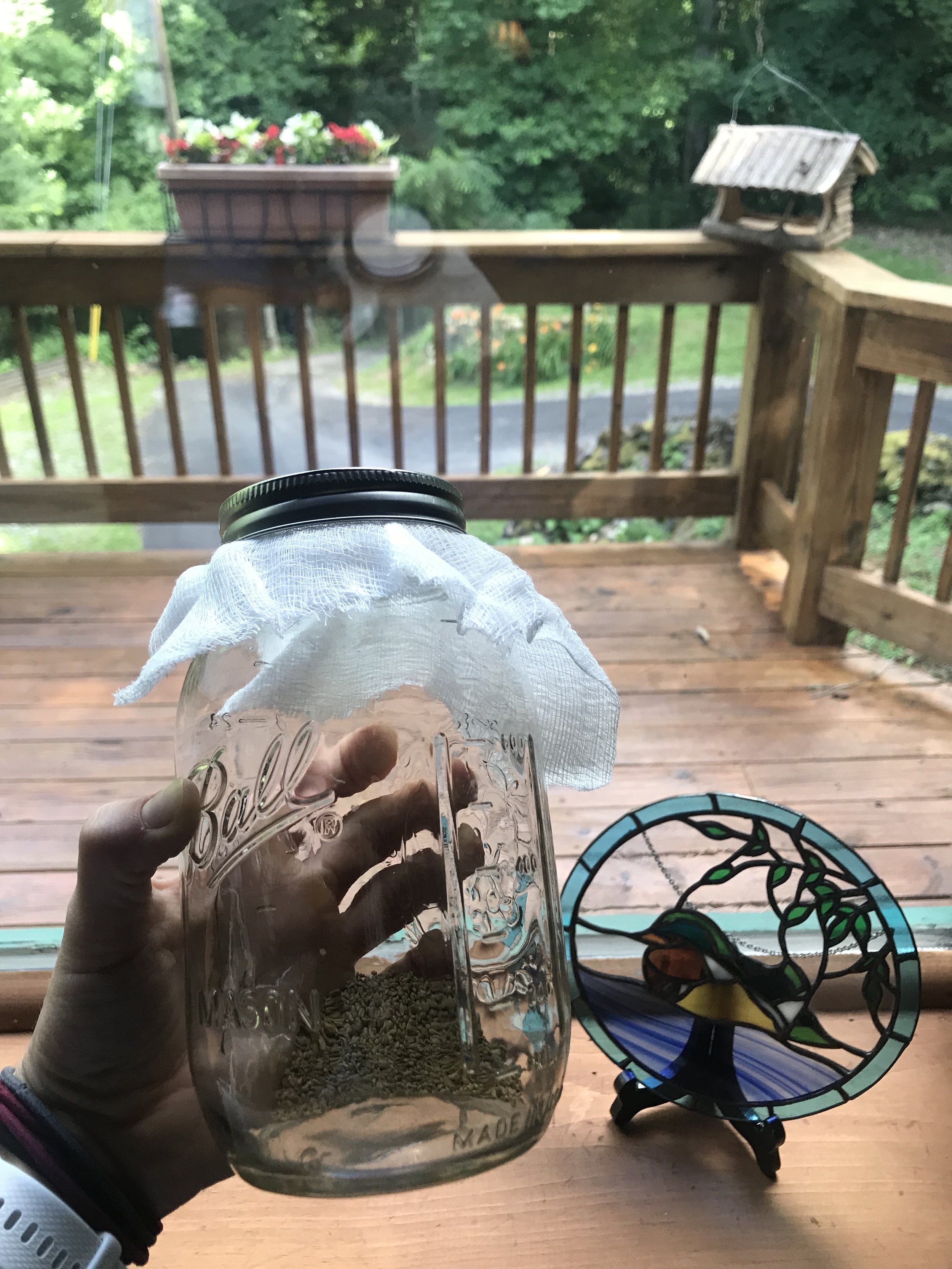My last roommate in Brooklyn introduced me to sprouting and I’ve become obsessed since, because watching these sprouts grow in a jar (inside my kitchen) in less than a week is sometimes the most exciting thing I experience that week. Heh, just kidding, but seriously— it is pretty neat to watch, and in a city with little green space of your own, especially in the winter, it can feel like a huge accomplishment to grow your own healthy food inside a shoe-box apartment. Some sprouts don’t even need sun to grow!
Sprouts are seeds that have germinated to put out shoots. I kinda see them as a teenager; they are in between a seed and a plant, and they grow pretty quickly! To germinate seeds, you typically just need a combo of moisture and the right temperature. They take between 3 and 7 days to sprout, though some take longer.
Let’s talk about the real why though. Why should you eat sprouts?
The sprouting process in itself tends to increase nutrient levels in whatever food source its germinating, from grains, to legumes and nuts, to veggies and seeds. Most sprouts contain more concentrated amounts of nutrients than their mature plant form. They are anti-inflammatory, containing properties that can aid in disease-fighting, improving the body’s natural detoxification process, protecting your brain and bones, and bettering your respiratory function.
These tiny plants are packed with fiber, vitamins, enzymes, antioxidants, water, and most are low in calories and cost, making them an ideal and affordable way to level-up your health.
Additionally, sprouting lowers the amount of antinutrients (compounds that interfere with nutrient absorption) so they are more bioavailable than mature forms of the plant. This means the vitamins, minerals, and other daily necessities, like protein are easier for our body to absorb and use than those from the mature food source.
These digestive benefits are why you may have noticed so many “sprouted” grains and legumes popping up in places like Whole Foods. For someone with a gluten or legume sensitivity that may feel bloated or get indigestion from regular wheat & beans, germinated foods like sprouted wheat, legumes, rice, ect. may cause no gastrointestinal symptoms. Sprouted grains also tend to have higher amino acid (protein) profiles and better nutrient availability than the non-sprouted grain.
Keep in mind, there is some risk with eating sprouts, as e coli and salmonella outbreaks have been linked to sprouts you buy from the grocery store. This is common due to the humid environment needed for sprouting…it’s a great climate for bacteria to grow and sometimes they are stored for too long or improperly at a store. That’s why sprouting your own plants is advised from me, and it’s going to be more cost efficient too.
Here’s how:
You can probably sprout most legumes, nuts, and seed without any special sprouting seeds. Like, I think you could actually buy a bag of lentils and they will probably sprout fine but…I’ve never done that and I would recommend buying specific sprouting seeds, like the ones from Mountain Rose Herb seen here. There’s a bunch on Amazon too, of course.
You’re also gonna need a container (I use a mason jar) and a sprouting lid (I use a make-shift one with cheese cloth as seen below) + water & your time daily: usually taking 3-7 days.
Though not always necessary, I’d recommend rinsing your seeds & checking for any unwanted debris first. Then:
Fill jar with 1-2 tablespoons of seeds & fill it 3/4 full of water. Soak seeds for about 8-10 hours. Keep in mind that seeds in a warmer environment will require less soaking; cooler temperatures and bigger seeds like chickpea or kidney bean require a longer soaker.
Drain the seeds
Rinse, drain, repeat. Rinse and drain the seeds with cool water at least 2 or 3 times a day. The idea is to not let the seeds dry out, so if you are in a warmer temp area, you may need to rinse them more often. 65-80°F is usually ideal for seed growth. Store the jar out of the sunlight, until day 3 or so. I typically tilt my jar at an angle in a bowl for storing - see pic below.
Once sprouts have filled your jar, it’s time for the final rinse. Remove any un-sprouted seeds/hulls.
Eat em! Sprouts are great on tons of stuff but I regularly top my salads, soups, sandwiches/bean burgers, omelettes, stir-fry, soup, rice and veggies dishes with these lil powerhouses!
Follow me on Instagram for stories like this on “how to” do stuff.
If you want to learn more about sprouting, my book suggestion is Ann Wigmore’s “The Sprouting Book”










